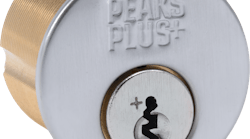You’re probably chuckling to yourself, “The right way? Heck, no key system transition or deployment is ever going to be without issues.” Okay, your subconscious mind has a point. There’s nothing easy about a key system transition or a new deployment, which is exactly why this knowledge series is being written.
How many times have you wanted to go back to that first, second, or third customer meeting to ask far more pointed questions about the customer’s keying needs and expectations? Maybe “digging deeper” at the onset would prevent some of the issues that arise during the design phase and deployment, helping you to avert those landmines that eventually catch up with you. Perhaps the answer is to use a systematic approach — a step-by-step plan that keeps you and the customer focused and engaged, working from the same script so that mistakes and problems are mitigated. You have to agree that a lot of time is spent — perhaps needlessly — going back to the charts and notes, time after time. Usually, it’s because of errors and omissions that could have been prevented upfront, during the first few customer meetings. That all adds up to lost time, lost money and lots of frustration. You don’t need that, and neither does your customer.
So what’s the secret to deploying a key system the RIGHT way? Beginning with this article, Medeco will present five easy steps to a successful key system deployment — one step per month in consecutive issues of Locksmith Ledger. We’ll interview your peers in the field to learn and share their proven strategies and best practices. We’ll dig into case studies to learn how a derailed project got back on track, or how a seemingly impossible deployment was implemented using a systematic approach. Our intent with this article series is to enlighten locksmiths, distributor reps and salespeople with insights for any-size key system project, and to also demonstrate the value of deploying a key system the right way!
Follow the 5 D’s of an effective key system deployment—Discovery, Design, Development, Deployment and Dialogue — and you’ll give your business a competitive advantage that will put you in a favorable or superior position with your customer, and in your market space. You’ll increase your productivity and efficiency, reduce waste, improve operations, improve quality, reduce risks, and provide a training platform for junior locksmiths. Ultimately, you’ll enhance the customer experience by exceeding his or her expectations, while also communicating that you and your team have what it takes to successfully deliver on large complex projects.
Key system deployments are unique. Each project will present its own interesting set of challenges and issues. However, you can minimize mistakes and problems that arise. Simply follow the 5 D’s for a successful key system deployment.
Let’s begin our 5-part series with Discovery.
Step 1: Discovery
This first step is critical. Discovery is the foundation for a successful deployment. It is here when all the cards should be laid on the table, and the plans developed, so that the next step — the Design phase — provides a realistic and workable solution.
A key system transition is an important decision. To begin the conversion process, you must deepen your understanding of your customer’s design needs through collaborative discussions. Depending on the size and scope of the project, a great way to kick things off is with a key system design strategy workshop. Those attending this workshop should be your own design team, plus the customer’s hand-picked team of managers or key employees who can best articulate their organization’s security weaknesses and keying needs. A setting such as this will help foster critical dialog between your team and theirs.
Collect as much information and detail as possible in this stage. Clearly define the scope of the key system deployment—what you will do, what you will not do, how you will do it, and what your responsibilities will be. By doing so, you will help prevent — or at least minimize — plan errors in the design phase.
During the Discovery phase, there are a series of plans that you and your customer need to develop to ensure that you both stay in sync through the remainder of the project phases. Not every key system project is the same. Some projects may need this level of detail and planning, and others may not.
Operations Plan:
An operations plan is necessary as it keeps you connected to the service and maintenance needs of your customer’s key system, as well as their related door hardware and access control system. It’s best to encourage the customer to develop this plan with your guidance. When the plan is owned by the customer, it’s a great way to ensure he’s aware of when his system will need replacement, something our industry doesn’t do very well. Some end users actually think that their key system will stay intact for 20 or 30 years, as if they’re buying a new HVAC system for their home. An operations plan allows you to set the life-cycle of your customer’s key system, which will come in handy later when replacement is called for, and without surprises.
Set expectations on how the key system will operate. Make sure stakeholders know what the key system will do and not do (not all stakeholders may know how or why the key system replacement decision was made). This is also a great time to remind the end user that the locks and keys are simply tools, and like any other tool if not managed properly the end user will not achieve the desired outcome—meaning, new policies may need to be created and the culture around how locks and keys are used may need to be change. A large key ring is not a sign of power or authority, and no…not everyone needs to carry a master key.
Stakeholder Engagement and Communication Plan:
Who are the stakeholders, and how will communications occur and when? Establish a point of contact and/or make a recommendation that the end user assign an internal champion with whom you and your team can work. Dig deep here and ensure you identify all stakeholders. Missing input and buy-in from just one stakeholder can derail and slow down the project in other phases. For example, the end user may need to manage certain operations of their key system via software. If so, has IT been identified as a stakeholder? When dealing with locks and keys it is easy to leave the IT function out of the deployment process; however, you don’t want to wait until you are a third of the way through the project and about ready to install the key management software only to find out that IT was never consulted and that access rights to install software are locked down. Bringing a stakeholder, like IT, into the discussion early can help keep certain aspects of the project on track, helps get their buy-in early, and makes them feel like part of the solution, instead of a roadblock.
Change Request Plan
How will changes be requested and who will approve them? There are times when plans have to change, but don’t just take it upon yourself or let a stakeholder demand a change be made. Have a clearly defined and formal process for managing and tracking change requests, and make sure you get buy-in from the stakeholder team on how changes will be approved and implemented. Keep in mind, what may seem like a simple change can impact resources, schedules, and costs in a big way.
Schedule and Activities Plan
What work will be done, and when? Who is responsible for each item? Create an itemized list of all the work that needs to be completed and by when. For example, make sure you understand what the customer’s expectations are for installation. Meaning, can the work be completed during normal work hours, or does the work need to occur after hours when the customer’s employees are gone for the day?
Resource Plan
What resources will be required (customer resources and dealer resources)? For example, as locks are being changed do you and your team need escorts? If so, the customer will need to provide that resource. If the deployment is a large project with hundreds or thousands of cylinders, where will that product be stored? You may need to request a secure room for storing product, or maybe you need a dedicated secure space in the parking lot for a trailer or container. Will you and your team require special access badges or credentials to perform the work? If so, you’ll need the customer to supply those resources.
Risk Mitigation Plan
Anticipate what risks could negatively impact the plan, and what steps can be taken to reduce the risks, or manage them if unavoidable. For example, what if the lock manufacturer’s lead time spikes and delivery of the system gets stretched out a couple weeks? Or what if you have a tech call in sick who’s intimate with the project? What if inclement weather shuts down the customer’s business or operations for the day? Think about these situations and how they could impact the resources, schedule, and/or costs and develop plans to keep those risks in check.
Quality Control and Monitoring Plan
Develop how quality will be managed and maintained throughout the project execution. View this plan with quality assurance and quality control methodologies in mind. Quality assurance measures help set the stage for a successful deployment, and then quality control and/or quality audits can be performed through a series of checklists—developed with the customer—to ensure expectations of the deployment are kept in check. A good quality control plan will not only give the customer confidence in your company, but it will also save you time and money during deployment.
The Discovery phase sets the table for the remainder of the project. It brings to light customer requirements and challenges so that the design phase can be tailored (or customized) appropriately to meet the customer’s needs and expectations.
Next month, we’ll continue with the second “D” – the Design phase.






